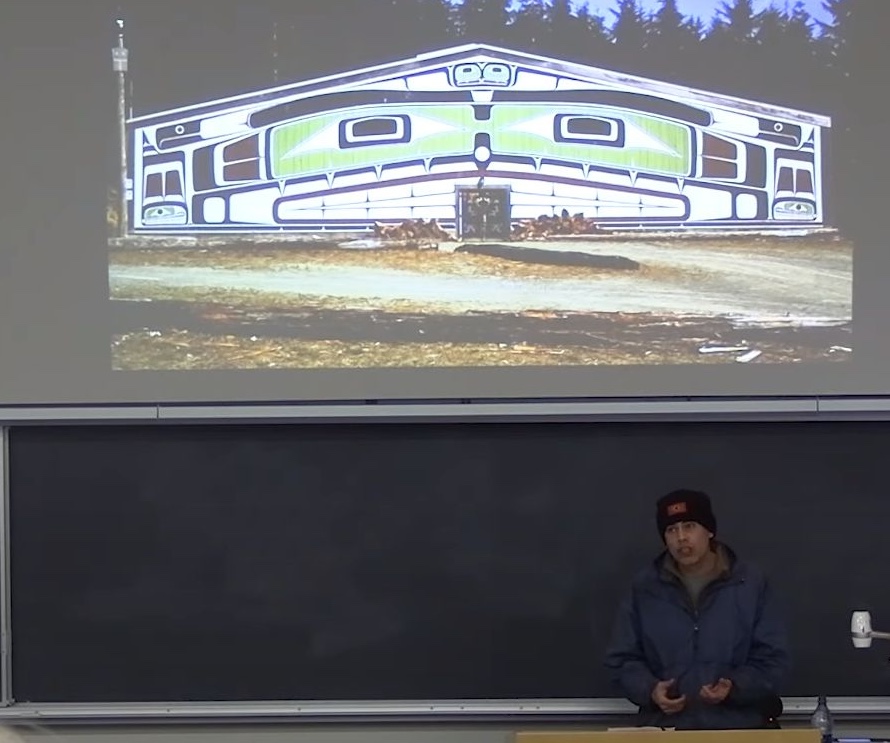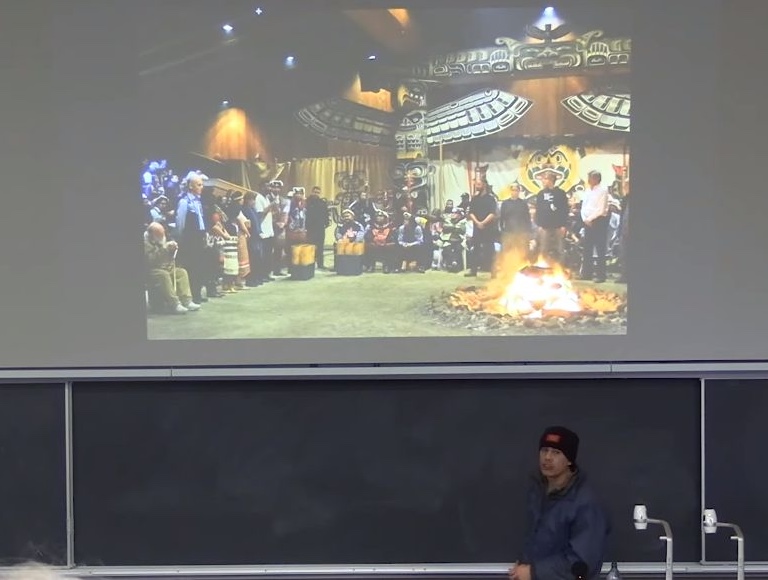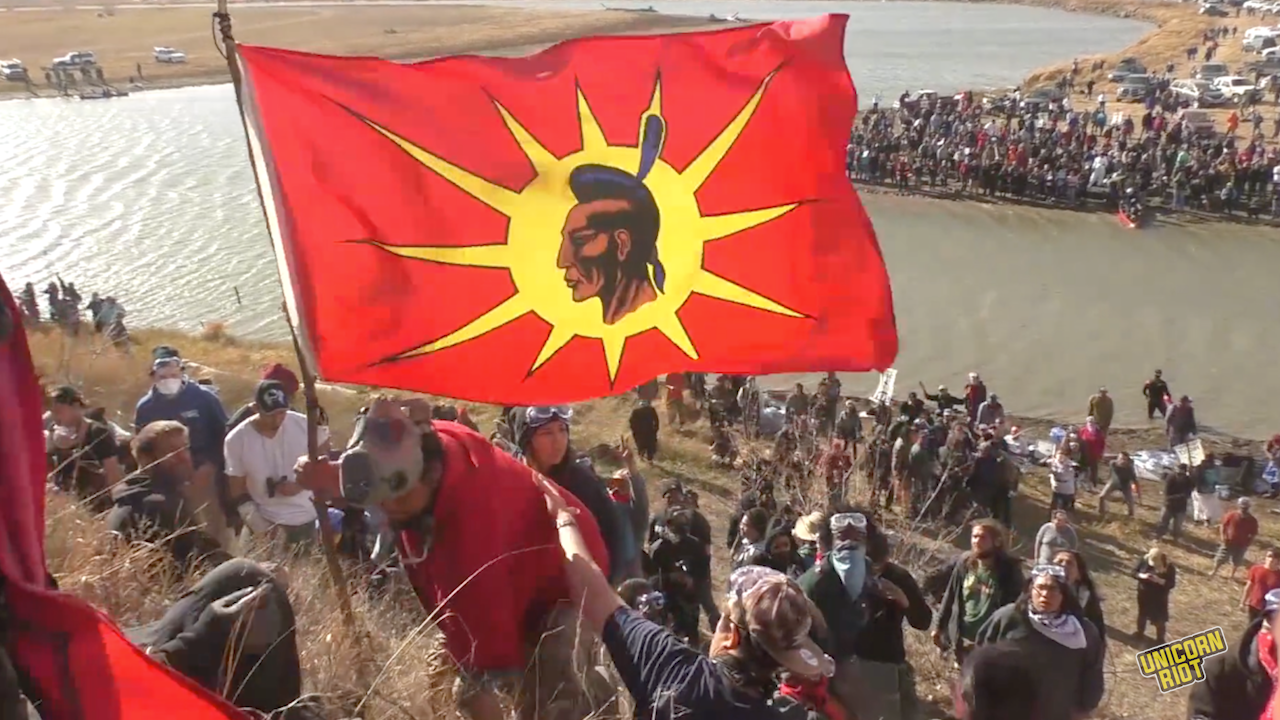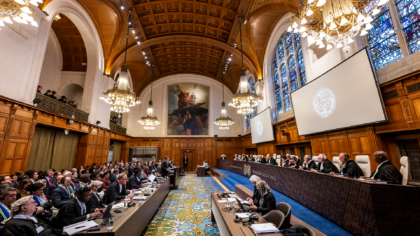Indigenous Writer Gord Hill on Resistance Art History
British Columbia, Canada — Renowned Kwakwaka’wakw artist, author, and political activist Gord Hill recently spoke at the University of Victoria’s (UVIC) Faculty of Fine Arts in Victoria for its annual Lehan Family Activism & the Arts Lecture covering the intersection of art and activism. Hill is the creator of The 500 Years of Resistance Comic Book, The Anti-Capitalist Resistance Comic Book, The Antifa Comic Book, and The 500 Years of Indigenous Resistance Comic Book.
Hill has been a vocal anticolonialist and anticapitalist advocating for Indigenous people globally since the 1990s through his involvement with the Indigenous People’s Movement. Hill also runs the Warrior Publications blog under the pseudonym Zig Zag and has been involved with various protests and shown solidarity with movements worldwide.

Hill’s talk at UVIC covered how art can catalyze social change. He showcased where Kwakwaka’wakw nation family crests can be found and how they are used as reminders of family and heritage. Hill said that family crests are often seen as a form of resistance. He spoke about their historical context and how the value of the crests are protected and are regarded as artifacts to document tribal chronology and keep traditions alive.

In his research for the March 18 event, Hill discovered that graffiti found in Egypt and Rome were some of the earliest examples of art being used for change. He also described how the artwork’s messaging is similar to what we see today in that it is found on walls and offers various critiques of that status quo.
“The first example I found was graffiti. And the graffiti could be carved into walls or painted onto walls and a lot of it was kind of like typical graffiti we see today–kind of vulgar maybe,” said Hill. “But there were also elements that were criticizing the rulers and so this is kind of like the first examples of agitational art that I found.”
Gord Hill
Throughout the presentation, Hill also discussed the myriad of similarities with various movements like the Black Panthers and the American Indian Movement. During the question and answer segment, he covered how law enforcement agencies infiltrated many of these groups to instill paranoia and fear to disrupt them through operations like COINTELPRO (Counterintelligence Program) by the FBI.
During an interview in 2017, Hill discussed the intersection of graphic art and resistance and how the internet has provided various channels and mediums for different art forms to garner attention. He also examined how writing and music have historically played major roles in contributing to the culture of resistance.
In the weeks following his presentation at UVIC, Unicorn Riot asked Hill about the current state of affairs on the civil and human rights fronts and whether he thought society was progressing toward decolonizing how people think about and view the world. Hill also discussed his views on Israel’s relentless assault on Palestinians.
Arturo Dominguez: Do you feel like young people in Western society are progressing in decolonizing the way they think and see the world?
Gord Hill: I think in some ways they are. There are certainly many changes in lifestyle and worldview that are a break from previous generations or which have become much more widespread than they previously were. Some of these challenge the dominant belief systems of Western Civilization, the white supremacist and patriarchal beliefs. But against this, you have a backlash from right-wing and conservative movements for example against “woke culture.” So you also have a lot of youth who are joining the right wing or at least adopting these same beliefs. As an example, you can look at the popularity of podcasters and YouTubers such as Joe Rogan, Andrew Tate, or Russell Brand, who undoubtedly have a tremendous impact considering the size and scale of their social media following. And these social media enterprises are based on algorithms, which we know are heavily biased towards right-wing and even far-right or conspiracy theorist content. At the same time, we’ve seen growing far-right and neo-Nazi movements in North America and Europe, which are involving youth as well and in which social media is playing a significant role as well.
AD: What’s your take on the attacks on civil and human rights globally?
GH: I think it’s largely the result of declining socio-economic conditions, which is creating greater social conflict, and in response, the state is turning increasingly to repression to impose control over the population.
AD: What’s your view on what’s happening in Palestine?
GH: It’s a genocide being carried out by Israel as part of the long-term Zionist goal of ethnically cleansing all of Palestine. It’s being supported, funded, and armed by the US because Israel is a strategic asset for the US in the Middle East and because of the powerful influence the Israeli lobby has on the US government. But the solidarity protests we are seeing now are unprecedented and thousands of young people are now being radicalized, so there’s a paradigm shift that is happening that will have profound impacts as we move forward.
WATCH: Gord Hill’s full UVIC lecture here:
Please consider a tax-deductible donation to help sustain our horizontally-organized, non-profit media organization:

Follow us on X (aka Twitter), Facebook, YouTube, Vimeo, Instagram, Mastodon, Threads, BlueSky and Patreon.


